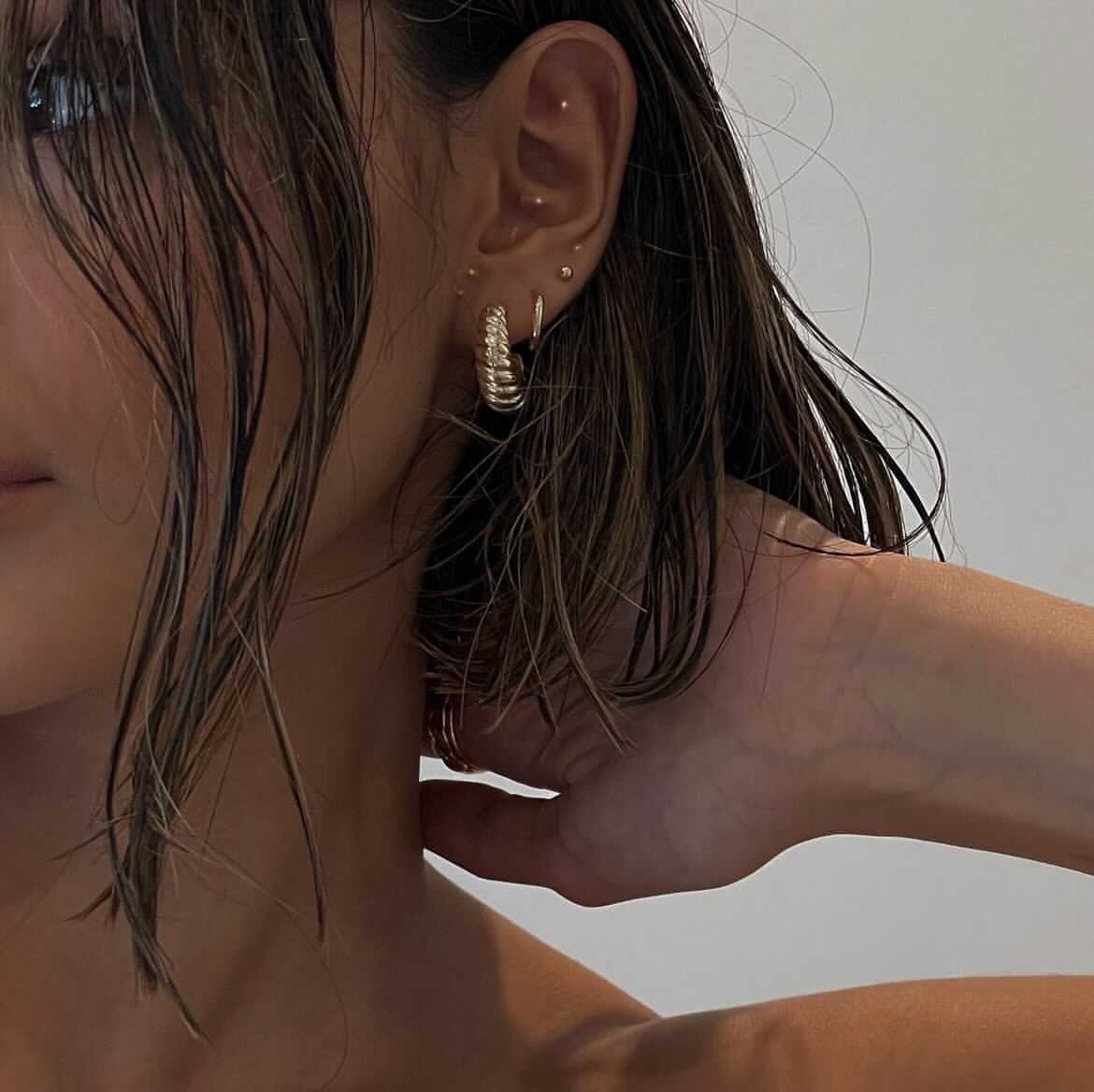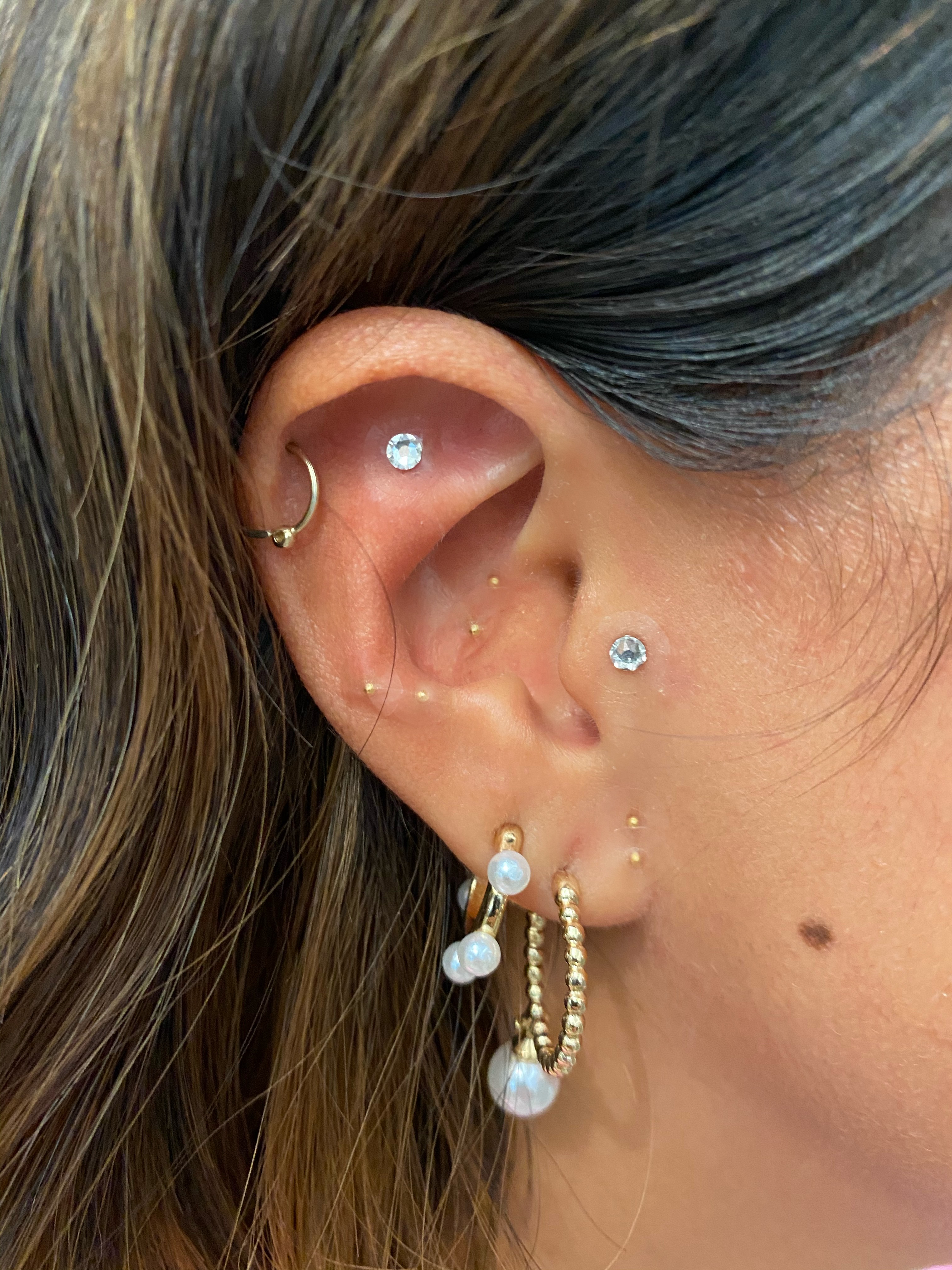News feed

Ear seeds is one of those mysterious wellness trends that have taken the beauty world by storm. While the practice – more specifically known as “auricular acupressure” or “auriculotherapy” – has been utilised for centuries in traditional European medicine, its rise to modern prominence is due to likes of Chris Hemsworth and Naomi Campbell.
At the height of the pandemic in March 2020, the British supermodel appeared on YouTube with a lengthy procedure on how she protects herself from illness (including acupressure). The past 12 months has put spotlight on our health. In bid to ease internal and external stresses via a holistic approach, I took a leaf from Campbell’s often complicated wellness guide and tried the practice for myself. Enter: Auricle Ear Seeds.
Speaking with Elle Halliwell, the founder of Auricle says she discovered auriculotherapy after her cancer diagnosis five years ago. After what she describes as “running on empty” for a decade, Halliwell adopted acupuncture as part of her self-care routine.
“I have so much more respect for the body, particularly the incredible balance it maintains at any given moment, despite all of the external and internal stress we place on them.”
“It was through an acupuncturist-friend of mine that I discovered the benefits of auricular therapy,” Halliwell tells GRAZIA. “Initially I only used traditional vaccaria seeds. But after discovering luxe gold-plated seeds from Japan I fell in love with their aesthetic and whenever I wore them I’d get comments from strangers in the street, asking where they could get some. They weren’t available in Australia, and I was already in my third year of a Naturopathic qualification, so I decided to add auriculotherapy to my studies and last year launched my own range.”
Traditional auricular acupressure has been shown in numerous studies according to Auricle to exert therapeutic effects and assist with managing stress and anxiety, pain, reduce cravings, regulate metabolism, improve sleep and reduce inflammation. Where you decide to place the ear seeds will depend on what benefits you will reap from the practice. For example, I chose to focus on relieving my TMJ (tight jaw), eczema and anxiety.
The process is relatively simple too; while I applied mine at home a colleague of mine had ear seeds professionally placed. It involves taking some deep breaths and focussing on the parts of the body and mind which need heeling. Using tweezers tips or a probe, you simply peel the stickers from the sheet and gently press close to the points suggested from the ear map.

“The seeds apply gentle pressure to acupoints of the ear in a similar way to acupuncture, so they’re also a good alternative for needle phobes! Our ears contain lots of nerve endings, including important nerves such as our Vagus nerve, which moderates our parasympathetic nervous system aka our rest and digest state,” notes Halliwell. “So applying seeds (and even just giving your ears a good massage) can relay to our body that it’s time to relax. This in turn helps promote cellular renewal and homeostasis.”
“You can tell a lot about someone’s health by their ears, particularly with older patients. For example cardiologists will often look for the appearance of a diagonal earlobe crease – called a Frank’s sign – to identify patients at risk of cardiovascular disease.”

I had mine applied for four days – it was painless and I often forgot it was there. While I’m unsure if placebo has an influence on the overall outcome I did not notice my TMJ nearly as frequently and felt that my eczema had eased. As for anxiety it was impossible to measure as unforeseen circumstances such as an increase in workload, a COVID-19 outbreak and interstate work trip had arisen during my trial.
Nonetheless, I will continue with the practice even if just for a deliberate and regular evening for selfcare. Oh, and did I mention, they look incredibly chic too?
“I have so much more respect for the body, particularly the incredible balance it maintains at any given moment, despite all of the external and internal stress we place on them,” Halliwell says.”I also realise that we know so much about how they work, but also so little about their innate ability for self-healing.









